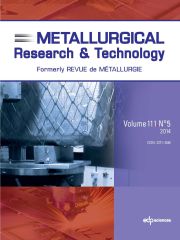Article contents
Deformation mechanisms in an age-hardenable Ni-Mo-Cr alloy subjected to cold rolling
Published online by Cambridge University Press: 17 November 2003
Abstract
Mechanisms of deformation in an age-hardenable Ni-Mo-Cr alloy containing large precipitates of the coherent ordered phase were investigated. The dominant deformation mechanism in the examined alloy depended on the applied amount of strain: for low strains micro-twinning within the ordered precipitates and dislocation slip in the matrix prevailed; at higher strains the f.c.c. twinning became the major deformation mechanism. Micro-twinning within the ordered phase was size related - micro-twins occur in large precipitates at relatively small strains. Twinning within the ordered precipitates may occur in all possible twin systems. Ten out of twelve possible twinning systems lead to the formation of true twins, and the long range order is preserved in the twinned regions. Formation of shear bands at high strains destroys the long range order.
- Type
- Research Article
- Information
- Metallurgical Research & Technology , Volume 100 , Issue 9: Science et Génie des MatériauxHétérogénéités de déformation , September 2003 , pp. 807 - 814
- Copyright
- © La Revue de Métallurgie, 2003
- 2
- Cited by


